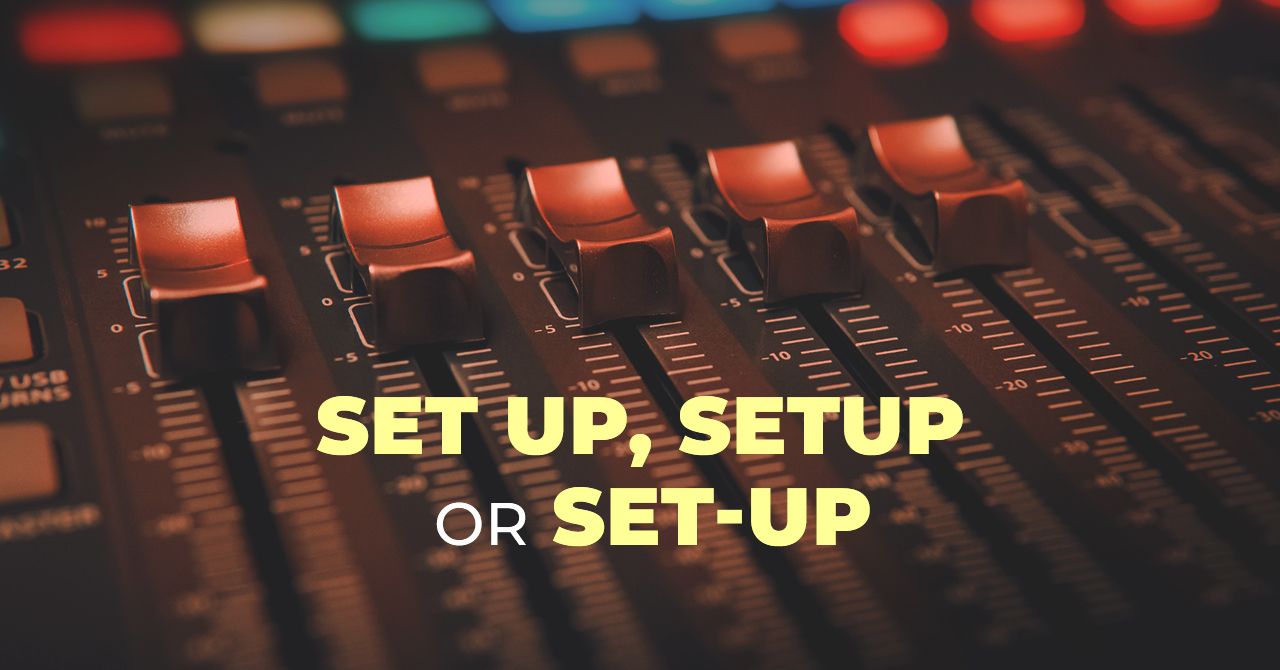
Setup or Set Up: How to Use Them Correctly
The two words belong to a different part of speech and have different meanings, so using the wrong one can confuse the reader and cause possible misunderstandings.
How to know whether you should use “setup” or “set up” in the sentence? This word pair confuses thousands of writers every day due to the same pronunciation and spelling, yet the single space that separates them makes a huge difference.
The two words belong to different parts of speech and have different meanings, so using the wrong one can confuse the reader and cause possible misunderstandings. Plus, you’ll make a poor first impression.
Setup or set up—how to make a difference
Clearing up the whole “setup” vs. “set up” confusion is easier than you think! Once you learn how to make a difference between them, you’ll be able to use them correctly.
For that, you need to know what each of them means and how it functions in the sentence.
Setup: meaning, usage, and examples
“Setup” is a single word that can function as a noun or adjective in a sentence. When used as a noun, it describes the way in which something is arranged, positioned, or planned.
Examples:
Your garden has a very beautiful setup. Did you hire a garden designer?
The setup of the computer is a no-brainer.
You can also use it as an adjective to describe the following noun while still indicating a pre-arranged situation.
Examples:
Can you explain the setup instructions to me?
The setup time for the game console is just 10 minutes.
In the first sentence, the adjective “setup” modifies the noun “instructions,” and in the second, it modifies the noun “time.”
Set up: meaning, usage, and examples
The first thing you can notice about the “set up” spelling is the space between the verb “to set” and the preposition “up,” which makes it a phrasal verb. This means you can only use it as a verb in the sentence.
Since “set” is an irregular verb, the past tense of set up is the same—“set up.” The “set up” or “setting up” meaning is putting things in order or preparing for something, but it can also mean setting a trap for someone.
Examples:
Can you set up the wedding decorations before noon?
I need help to set up my new computer.
She set me up.
Since “set up” is a transitive verb, a verb with one or more objects, you can use it in two ways: after the phrasal verb or between the verb and the preposition.
Examples:
Can you help me set up the device?
Can you help me set the device up?
Is “set-up” a different word?
Now that we’ve cleared up the confusion about “setup” and “set up,” let’s talk about “set-up.” Is this an entirely new word with a totally different meaning and function? Well, it’s not. It’s actually the British spelling form of the noun/adjective “setup,” so it has the same meaning and usage.
This means the phrases “beautiful set-up” and “beautiful setup” have the same meaning. The only thing to remember is not to use this form as a verb. But no matter which version of the noun/adjective you use, the American or the British one, keep consistency in your writing and use only one spelling version throughout the entire text.
Do you know how to spell these words?
Answer this quick test to make sure!
The easiest way to remember the difference
So, how do you know which spelling version you need to use in your sentence? Setup or set up? By practicing with English teachers online, you will learn that if you need a noun, use “setup” or even “set-up” if you target a British audience. Since nouns are usually preceded by indefinite articles, if you need one before the word in question, you most likely need the noun setup.
If you need to modify another noun, you need the adjective form, which is the same as the noun setup. If you need a verb to describe the action of making arrangements or putting things in order, you need “set up.”
I'm an ESL teacher with over 7 years of experience in providing original content. I really like writing educational articles which may help others learn some aspects of English.

